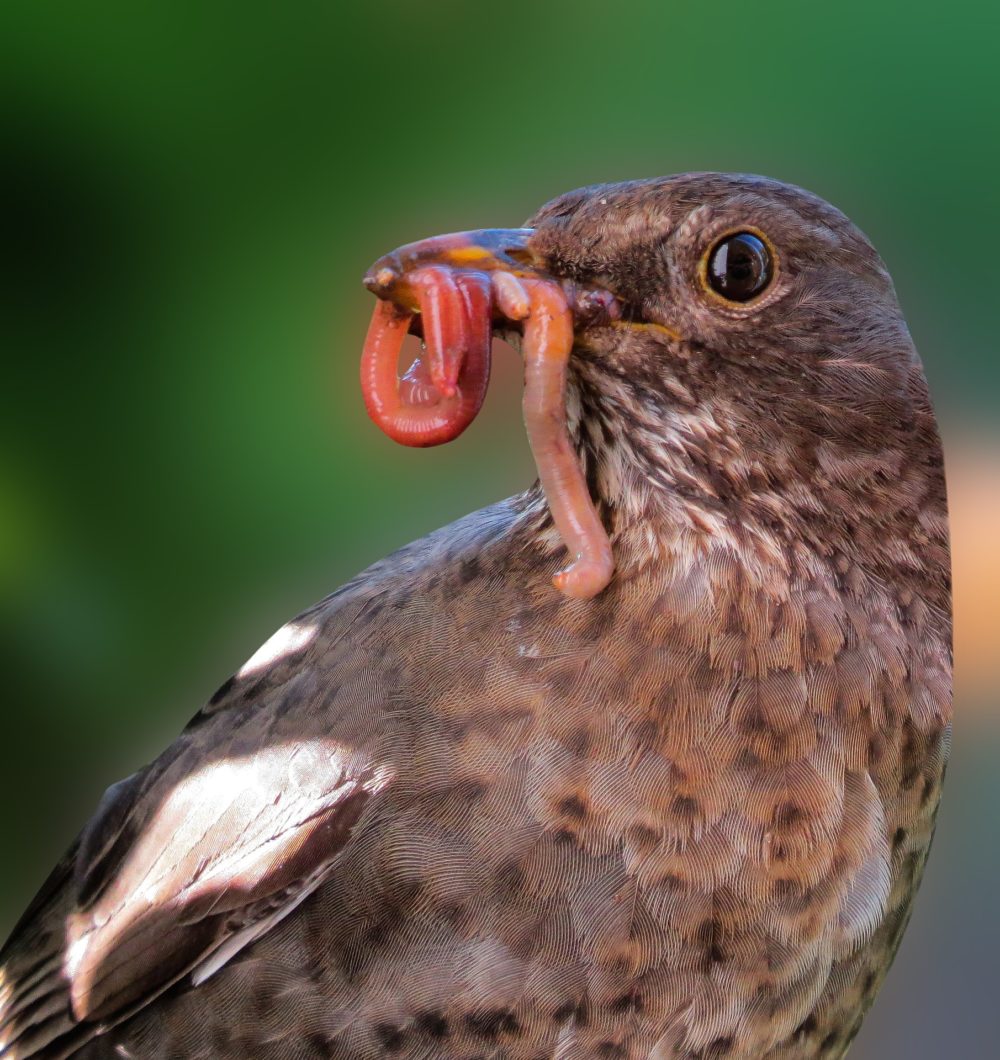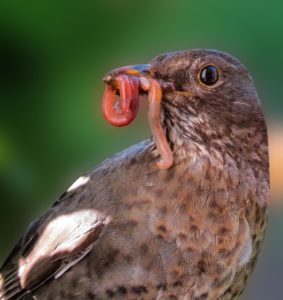The Worm Has Turned
Food for thought: the earthworms and nightcrawlers that populate our gardens were introduced accidentally with ship ballast dumped on our shores and in plants brought by colonists.
By Thomas Christopher
There are no species of wildlife more beloved of gardeners than the earthworm. Yet, as I’ve been learning recently, this creature can also spell trouble, both for the cultivator and for the local ecosystem.
The earthworm has been an icon of a healthy garden ever since its cause was taken up by no less a figure than Charles Darwin. For more than forty years, when he wasn’t working on his theory of evolution, Darwin was quite likely observing and experimenting on earthworms. The great scientist was deeply interested in geology and he was fascinated by the very slow yet powerful ways in which earthworms had transformed the British landscape. Darwin observed how earthworms consumed organic matter, passing it and soil through their guts to deposit the end product at the surface in little piles of fine-grained, nutrient-rich “worm castings.” Although individually each pile of castings is insignificant, in the aggregate, their impact on the environment is huge. Using an estimate by a fellow scholar that the average acre of soil supported 53,767 worms, Darwin calculated that this population cumulatively deposited more than ten tons of castings on the soil surface every year, for a total of 320 million tons nationwide. “It may be doubted,” he wrote in the book about earthworms that he published in 1881 (the year before his death), “whether there are many other animals which have played so important a part in the history of the world, as have these lowly organized creatures.”
Ever since, gardeners have regarded earthworms as a principal source of topsoil, as well as, with their tunneling, aerators of the soil. I remember my mother – my first gardening instructor – teaching me that these creatures should be treated with something like reverence.
Indeed, in Darwin’s England, where earthworms are native, their effect is all to the good. That isn’t necessarily so, however, in the northern United States, according to Josef Gorres, a professor of plant and soil science at the University of Vermont. Earthworms were largely eradicated from our area by the ice sheets of the last ice age, so that there are only a couple of relatively rare species which are truly native here. The rest – the earthworms and nightcrawlers that populate our gardens – were introduced accidentally with ship ballast dumped on our shores and in plants brought by colonists. As these creatures spread, they profoundly affected the soil ecology, making it less hospitable to many wildflowers and other native plants, especially in forested areas.
What’s of far more concern to Dr. Gorres, though, is some more recent arrivals. These are the “jumper” or “snake” worms that arrived from Asia and which are still colonizing the northern landscape. These were first observed in the eastern United States in the 1920’s in the Washington D.C. and Baltimore area; one theory is that they arrived with the flowering cherry trees sent from Japan to adorn our nation’s capital. In any event, they have been moving north since then, distributed in nursery stock and plants traded among gardeners. Once introduced to an area, they may also be spread by municipal leaf composting programs, unless the leaves are hot composted.
These worms differ physically in a number of respects from the earlier European arrivals, but are most easily distinguished by the violent way they thrash and jump when disturbed. The snake worms also differ in the more aggressive way they process organic litter. They can reduce a couple of inches of organic mulch or natural forest duff to something like a loose layer of coarse coffee grounds in a single summer. This transformation of the soil’s top layer can interfere with the growth of shallow-rooted plants. In a woodland, this has a number of impacts, including reducing deer browse, forcing the deer to focus on tree seedlings and so interfering with the forest’s ability to regenerate. By thinning the vegetation on the forest floor, snake worm activity also exposes the nests of ground-nesting birds, making them more vulnerable to predation.
Once an area is infected with snake worms, the best that can be achieved is to reduce their numbers. This can be accomplished in the garden by hand-picking them and drowning them in a bucket of water. Reducing the numbers of worms will, over time, also reduce the number of their egg cases in the soil, decreasing their rate of reproduction and making the job of controlling them easier.
I never thought, when my mother extolled the virtues of earthworms, that someday I might be contemplating their control.

 Thomas Christopher is the co-author of “Garden Revolution” (Timber Press, 2016) and is a volunteer at Berkshire Botanical Garden. berkshirebotanical.org Be-a-Better-Gardener is a community service of Berkshire Botanical Garden, one of the nation’s oldest botanical gardens in Stockbridge, MA. Its mission to provide knowledge of gardening and the environment through 25 display gardens and a diverse range of classes informs and inspires thousands of students and visitors on horticultural topics every year. Thomas Christopher is the co-author of Garden Revolution (Timber press, 2016) and is a volunteer at Berkshire Botanical Garden. berkshirebotanical.org.
Thomas Christopher is the co-author of “Garden Revolution” (Timber Press, 2016) and is a volunteer at Berkshire Botanical Garden. berkshirebotanical.org Be-a-Better-Gardener is a community service of Berkshire Botanical Garden, one of the nation’s oldest botanical gardens in Stockbridge, MA. Its mission to provide knowledge of gardening and the environment through 25 display gardens and a diverse range of classes informs and inspires thousands of students and visitors on horticultural topics every year. Thomas Christopher is the co-author of Garden Revolution (Timber press, 2016) and is a volunteer at Berkshire Botanical Garden. berkshirebotanical.org.


